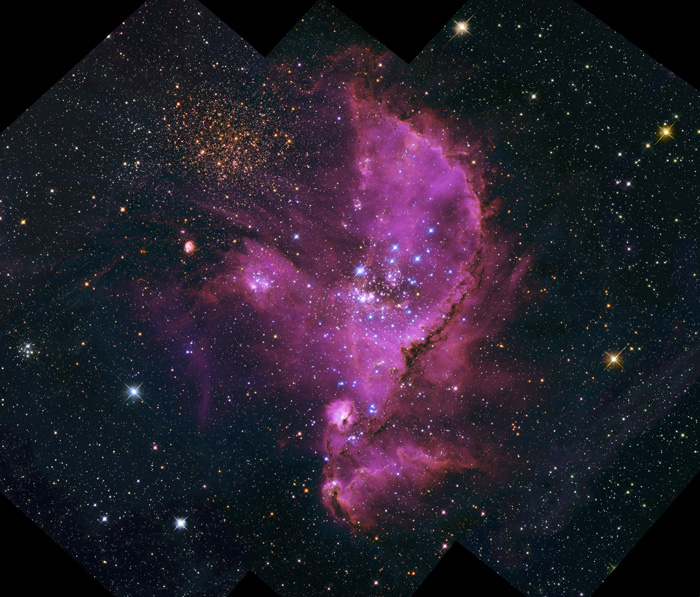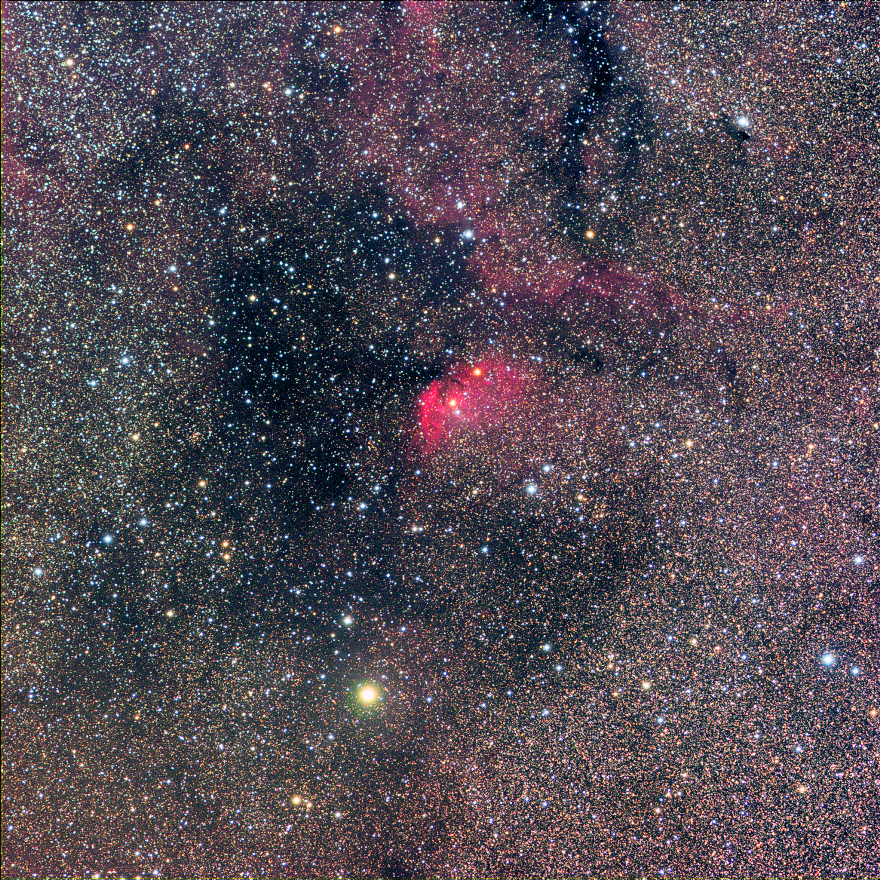Recent Submissions: 2010 July 7-9
Posted: Tue Jul 06, 2010 3:38 pm
_____________________________________________________________________________
Please click on each image for best viewing; please click on the link below the
image title for more information about the image. Thank you!
_____________________________________________________________________________
<- Previous submissions
Milky Way 360º Panoramic View
http://miguelclaro.com
Copyright: Miguel Claro
NGC 346, Open Cluster and Nebula Complex (N66) in the Small Magellanic Cloud
http://www.robgendlerastropics.com/NGC3 ... ndler.html
Credit and copyright: Robert Gendler, assembly and processing; HLA, data
The Lagoon Nebula
http://www.schursastrophotography.com
Copyright: Chris Schur
I imaged this nebula in the brightest part of our sky for the first half of the sequence, however careful processing removes the sky glow and enhances the red hydrogen components. ~ Chris Schur Crux: The Southern Cross
http://paulh101.zenfolio.com/p766654778 ... #h16db9028
Copyright: Paul Hughes
The Visible Universe
Copyright: Rolf Wahl Olsen
Please click on each image for best viewing; please click on the link below the
image title for more information about the image. Thank you!
_____________________________________________________________________________
<- Previous submissions
Milky Way 360º Panoramic View
http://miguelclaro.com
Copyright: Miguel Claro
NGC 346, Open Cluster and Nebula Complex (N66) in the Small Magellanic Cloud
http://www.robgendlerastropics.com/NGC3 ... ndler.html
Credit and copyright: Robert Gendler, assembly and processing; HLA, data
The Lagoon Nebula
http://www.schursastrophotography.com
Copyright: Chris Schur
[attachment=1]M8-24x5mF1600_schur.jpg[/attachment]
The Lagoon Nebula is over a degree across, nearly the size of this 2.5 degree field. Crossing diagonally through its center is Barnard 88, a river like dark nebula cut into parallel bands here. The splashy bright open cluster to the left is NGC6530, a 4.6 magnitude object, 14 acrcmins in size. The bright object to the right of center in the heart of the nebula is the Hourglass Nebula. Recent Hubble images of this area revealed tornado like vortexes present. Numerous small dark globules of dust lie within this object, many of which contain dim infrared proto stars forming new solar systems like our own. I imaged this nebula in the brightest part of our sky for the first half of the sequence, however careful processing removes the sky glow and enhances the red hydrogen components. ~ Chris Schur Crux: The Southern Cross
http://paulh101.zenfolio.com/p766654778 ... #h16db9028
Copyright: Paul Hughes
- [attachment=0]35 Crux 2_Hughes.jpg[/attachment]
The Visible Universe
Copyright: Rolf Wahl Olsen







